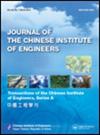Investigation of mechanical, metallurgical and corrosion characteristics of friction stir welded dissimilar AA 5052-H32 and AA 6061-T6 joints
IF 1.2
4区 工程技术
Q3 ENGINEERING, MULTIDISCIPLINARY
Journal of the Chinese Institute of Engineers
Pub Date : 2023-06-29
DOI:10.1080/02533839.2023.2227875
引用次数: 1
Abstract
ABSTRACT Welding is used for fabricating various components to increase the application of aluminum alloys. When compared to fusion welding, friction stir welding (FSW) is used to join non-ferrous and ferrous with similar and dissimilar materials with fewer defects. In the present work, FSW was carried out between 5 mm thick plates of solid solution-strengthened AA 5052-H32 and precipitate-strengthened AA 6061-T6 alloys. The plates were welded at tool rotational speeds (TRS) of 800, 950, and 1100 rpm. Furthermore, a salt spray test was conducted on both base metals and FSW joints. The scanning electron microscope was accustomed to examining the microstructure of the base metals and different zones. Mechanical characterization was performed to determine the welds’ strength and hardness. The phase examination was then performed on the weld nugget zone using X-Ray Diffraction (XRD). To determine the mode of failure, the tensile fracture surfaces of the welded samples were inspected. The study found that the joint prepared at 950 rpm yielded maximum tensile strength of 174.3 MPa, % elongation of 13.8% and a higher hardness of 72 HV related to other joints. The corrosion test results exposed an enhancement in corrosion resistance of maximum tensile strength obtained from the welded joint不同AA 5052-H32和AA 6061-T6搅拌摩擦焊接接头力学、冶金和腐蚀特性的研究
焊接是制造各种零件以增加铝合金应用的一种方法。与熔焊相比,搅拌摩擦焊(FSW)用于连接有色金属和有色金属与相似和不同的材料,缺陷较少。本研究在固溶强化AA 5052-H32和析出强化AA 6061-T6合金的5 mm厚板间进行了FSW。在800、950和1100 rpm的刀具转速(TRS)下焊接钢板。此外,还对贱金属和FSW接头进行了盐雾试验。扫描电镜用于观察基体金属及其不同区域的显微组织。进行力学表征以确定焊缝的强度和硬度。然后利用x射线衍射(XRD)对焊缝熔核区进行物相分析。为了确定失效模式,对焊接试样的拉伸断口进行了检测。研究发现,在950 rpm转速下制备的接头抗拉强度为174.3 MPa,伸长率为13.8%,硬度为72 HV,高于其他接头。腐蚀试验结果表明,从焊接接头获得的最大抗拉强度的耐腐蚀性增强
本文章由计算机程序翻译,如有差异,请以英文原文为准。
求助全文
约1分钟内获得全文
求助全文
来源期刊
CiteScore
2.30
自引率
9.10%
发文量
57
审稿时长
6.8 months
期刊介绍:
Encompassing a wide range of engineering disciplines and industrial applications, JCIE includes the following topics:
1.Chemical engineering
2.Civil engineering
3.Computer engineering
4.Electrical engineering
5.Electronics
6.Mechanical engineering
and fields related to the above.

 求助内容:
求助内容: 应助结果提醒方式:
应助结果提醒方式:


